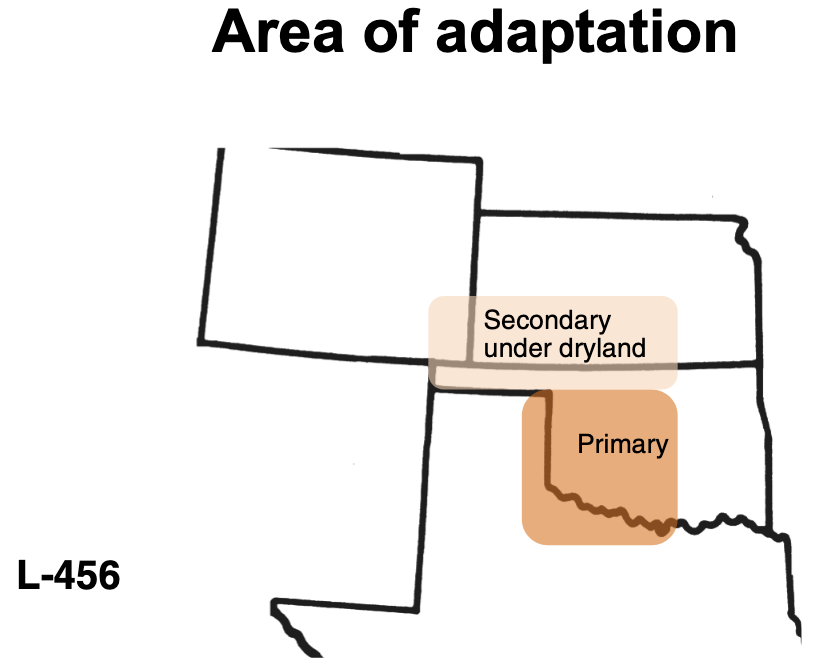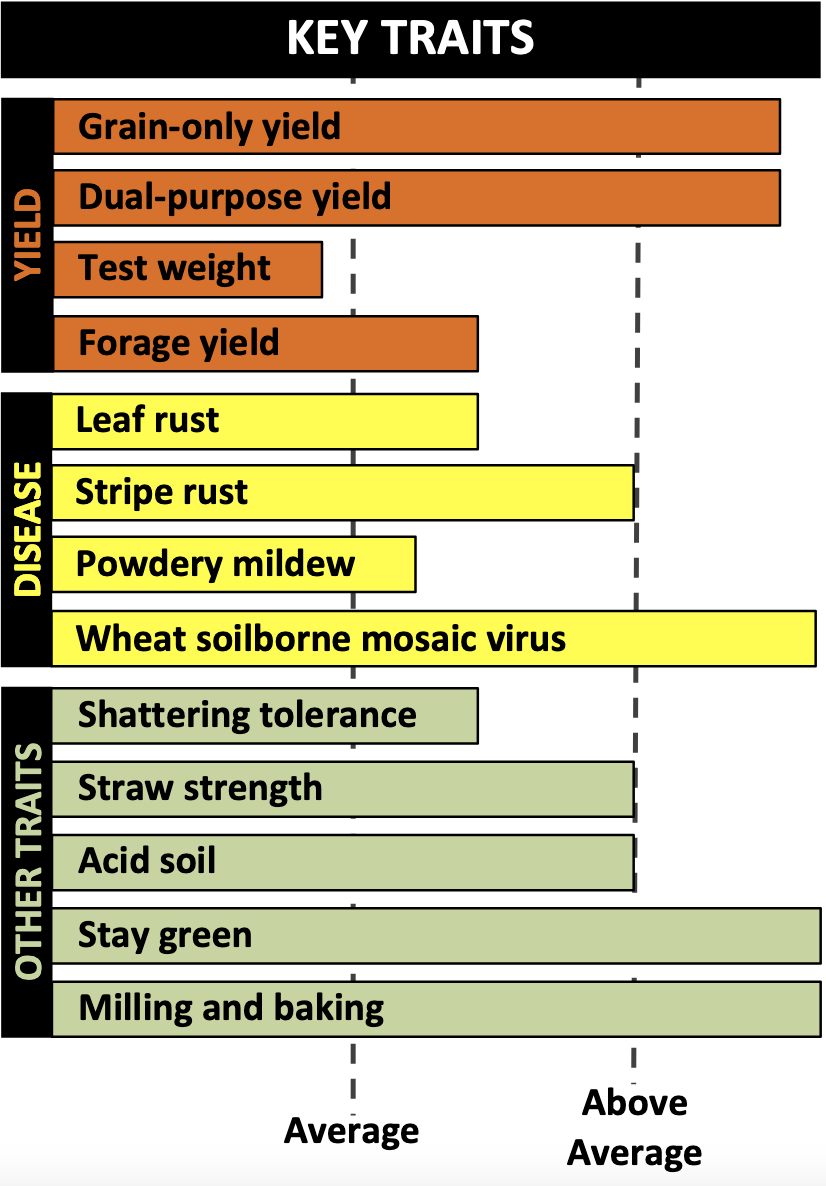Bentley
A hard red winter wheat, Bentley features excellent grain yielding ability under challenging climate conditions, including moderate, but chronic drought stress and late winter freezes. Bentley variety is known for yield stability for dryland wheat production. It also fits well in dual-purpose grazed systems and in minimum-tillage systems promoting the development of multiple leaf spotting diseases.
Bentley’s drought resistance is equal to or slightly better than Iba, which is currently our best adapted variety for drought, but it has much better leaf hygiene in the presence of leaf spotting diseases, particularly tan spot and physiological leaf spot.
Here are some of the benefits of Bentley wheat:
- Yield stability in drought-stressed

environments - Good forage production with excellent
recovery from grazing - Late first hollow stem but medium
heading offers extended grazing without
delaying harvest - Non-Duster derived lineage offers genetic
diversity to reduce production risk - Moderately tolerant of acid soils
- Test weight is below average, so timely

harvest of Bentley is important - Moderate resistance to barley yellow
dwarf - Moderate resistance to tan spot for no-till
production systems - Bentley has intermediate resistance to
most foliar diseases and is likely to
tolerate light to moderate disease
infection but will require a fungicide in years with heavy disease pressure
Along with another OSU experimental line, Bentley earned the 2015 Millers Award presented by the Wheat Quality Council.
Bentley is best suited for growth in southwestern and central Oklahoma and areas extending north, east and possibly into south central Kansas. Its use in the panhandle should be limited to dryland conditions.
Producers should wait until early September to plant Bentley due to possible heat-sensitive germination and the variety should not be harvested late because of the potential for below-average test weight.
Bentley is named after Walter Dimmitt Bentley, a former educator turned farmer who served as the first director of the Oklahoma Cooperative Extension Service from 1914 to 1916 and as assistant director of Extension from 1917 until his sudden death in 1930. The variety’s name was chosen as part of a contest celebrating Extension’s centennial anniversary in 2014.
